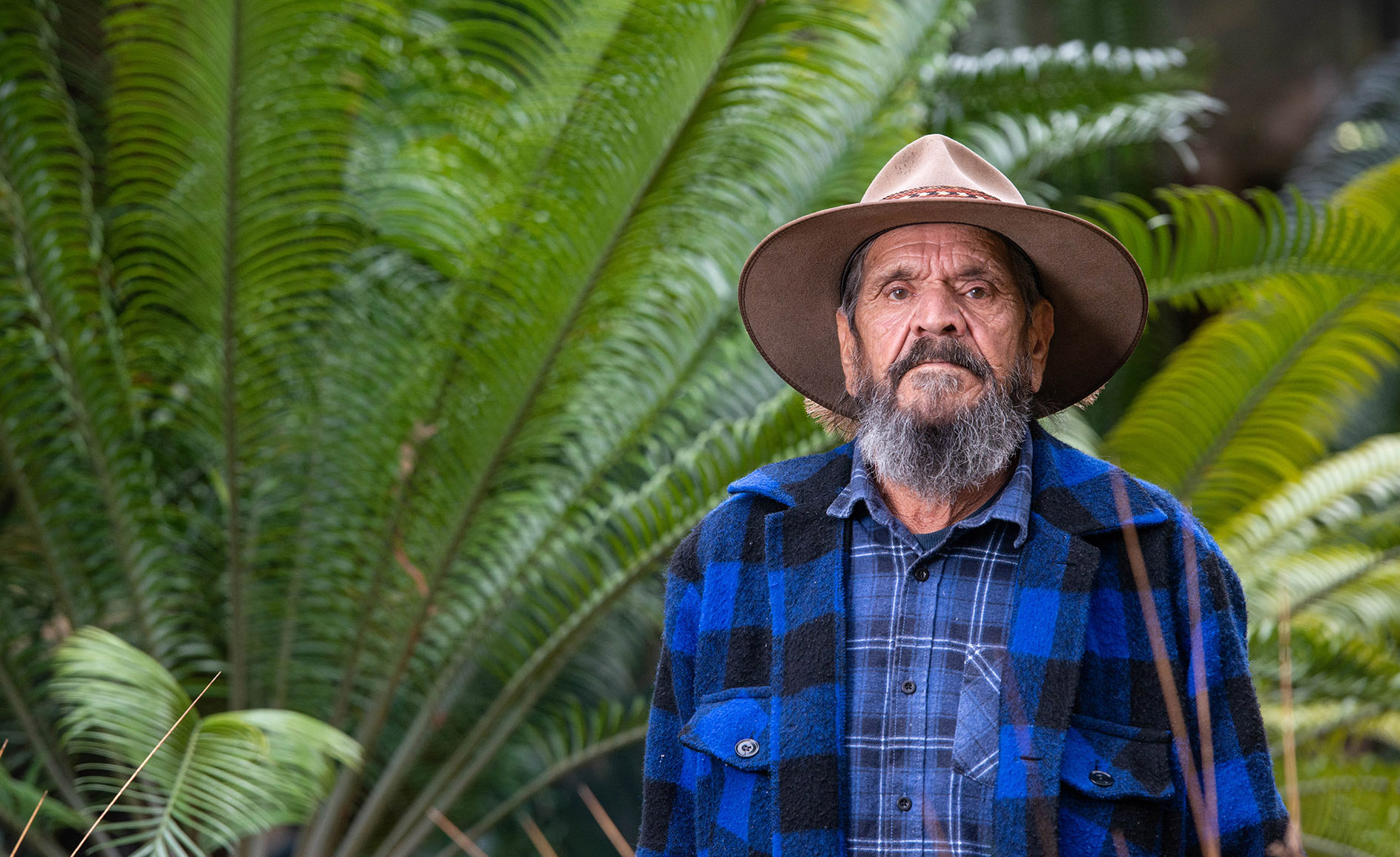
Aboriginal and Torres Strait Islander readers are advised that this article contains the name and image of a deceased Elder, used with the family’s permission.
An Adnyamathanha Elder is working with Flinders University researchers and the local community to uncover the cultural history of the Warratyi Rock Shelter.
The chance discovery of a remote South Australian cave has uncovered archaeological evidence of 50,000-yearold human occupation – one of the oldest in Australia’s Aboriginal history.
When Adnyamathanha Elder and cultural teacher, ranger and researcher Dr Cliff Coulthard (1953 – 2023) showed Flinders University researcher Dr Giles Hamm the Warratyi Rock Shelter in 2012, they had no idea of the extraordinary archaeological riches they would uncover.
Their initial dig at the site produced a wide range of items that have been dated using radiocarbon and Optically Stimulated Luminescence (OSL) methods, and papers of their find have been published in the prestigious Nature journal.
‘We had done digs at other sites in the southern Flinders Ranges – at Arkaba and Hookina Creek – but we only found items that date back to around 27,000 years. It was incredibly fortunate that we went further north, because that is where we struck gold,’ says Cliff.
RESEARCH FUNDING
Warratyi, located in a sheer gorge near a spring just south of the Strzelecki Track, was first pointed out to Cliff when he was a 15-year-old stockman working beside Adnyamathanha Elders Colin and Lachlan Wilton. He had since forgotten about Warratyi and only recognised the location by chance while conducting extensive Flinders Ranges fieldwork, with Dr Hamm, to identify sites for potential excavation.
Receiving $910,000 of Australian Research Council funding in December 2021 will now enable Flinders University researchers – led by Dr Hamm along with Cliff and his brother Terry Coulthard (of Iga Warta and Adnyamathanha Traditional Lands Council), Professor Mike Smith, Professor Claire Smith, Dr Chris Wilson (BArchaeol(Hons) ’06, PhD(EHLT) ’17) and Associate Professor Mike Morley – to undertake further investigations at the Warratyi site.
EXCHANGING KNOWLEDGE
The research team will work with local Adnyamathanha community members to uncover further evidence of how Australia’s earliest civilisation successfully survived, adapted and thrived by meeting the challenges of an ever-changing late Pleistocene arid climate.
The study will involve a unique knowledge exchange workshop method to share archaeological and scientific information to better understand how Adnyamathanha people adapted through cultural innovation and traditional land use practices in the past.
EXTENSIVE FINDINGS
The initial dig at Warratyi took three weeks for the archaeological team to excavate about a metre in depth, after they had walked almost two kilometres each day through difficult terrain to reach the cave concealed in a cliff face. The riches that their efforts revealed were extensive.
‘The findings have unlocked secrets of a spoken history that has passed on a thread of ancient knowledge. It shows the power of language,’ says Cliff.
They found remnants of small stone tools after digging only five centimetres into the floor of the cave, but found greater prizes at a depth of about 50 centimetres to one metre, including the remains of charcoal, cooked food and ceremonial ochre that reveal the cave was a frequently used settlement. Cliff believes it could have housed up to 20 people.
‘Cooked remains included the bones of Andu (yellow-footed rock-wallaby) and kangaroo, and a rare fragment of dingo bone, along with the hard kernels of quandong seeds – which is still a common native food of the Flinders Ranges region,’ says Cliff.
MYTHICAL BEAST: YAMARTI
But most prized of all was finding the bones of the extinct Yamarti (Diprotodon optatum) – a giant wombat-like marsupial that Cliff had heard Adnyamathanha Elders talk of as an almost mythical beast.
‘No-one ever truly understood what the Yamarti tales were about,’ he admits. Now they have evidence – underlining the strength of oral traditions that have been passed through Adnyamathanha generations for 50,000 years.
Cliff believes it’s a valuable stepping stone that can help rekindle ancient language and traditions. ‘It shows there are still many new things about the past for us to learn.’
The discovery also marks the culmination of Cliff’s lifetime fascination in archaeology and geology. Starting as a ranger in 1977, he was one of the first three Aboriginal Heritage Rangers appointed to the SA Aboriginal and Historical Relics Unit in 1980, and has supported many archaeologists and rock art research teams in the Flinders Ranges.
UNDERSTANDING ANCIENT TRUTHS
Now, with decades of accumulated knowledge and experience, Cliff feels he’s truly prepared to understand more ancient truths from archaeological digs such as Warratyi.
‘It’s just like it was waiting for me, and the spirit of those old men guided me there. It’s the ultimate history story.’
He believes in the importance of sharing cultural heritage across cultures, and a significant next step will be creating workshops to teach young Adnyamathanha people and archaeology students at Flinders University the significant cultural and historical context of what has been discovered at the Warratyi site.
‘I just wish my grandfathers were here to hear of this discovery,’ says 69-year-old Cliff, his eyes gleaming. ‘It would have made them happy and so proud of what our people have achieved.’
‘Yep, we are the ultimate survivors.’
Honorary Awardee: Cliff Coulthard was made an honorary awardee of Flinders University in 2022 with a Doctor of Letters honoris causa to acknowledge his lifetime commitment to gaining Adnyamathanha cultural understanding and a sustained interest in collaborating with a wide range of researchers. It also recognises his focus on mentoring young Adnyamathanha people and his strong interest in sharing his deep cultural knowledge with others.

